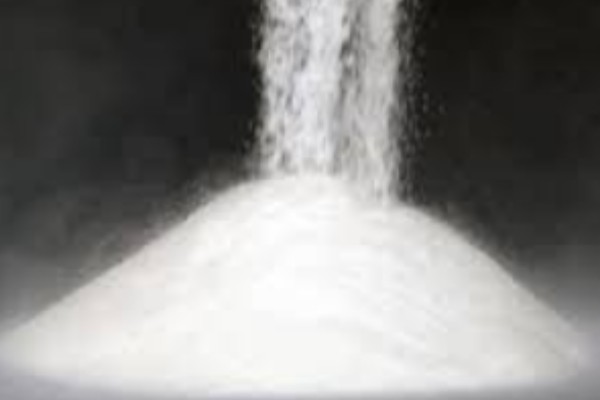Efficacy of polyacrylic acid sodium
Sodium polyacrylate is a linear water-soluble polymer, which can be used as an effective flocculant in brine refining in the Chlor-alkali industry. It is the separation of venomous liquid precipitation in soda ash production and the therapy of commercial wastewater. It is additionally a reliable thickener for latex thickening, daily chemicals, specifically as an artificial additive, with unique thickening effects in bread, fish, aquatic items, and other products.
Sodium polyacrylate detergent mechanism is that sodium polyacrylate has the following features: chelating result on steel ions, serving as an alkaline buffer, able to disperse dust right into the water, and can prevent the dust from reattachment and deposition to the fabric to make sure that salt polyacrylate has a good coagulation (chelating) effect on colloidal suspensions, which is due to the neutralization of its surface area fee, that is, it develops quasi-ionic bonds with favorably charged put on hold bits, right now, salt polyacrylate has a great coagulation (chelating) result on colloidal suspensions. Due to electrostatic repulsion, the carboxyl group of sodium polyacrylate will properly extend the elastic polymer to assist in the adsorption (coalescence) of the placed particles. When Na+ and Ca2+ ions exist around the polymer, Ca2+ ions are quicker adsorbed (debilitated). Salt-based polyacrylate is a highly effective detergent additive with multi-molecular adsorption surface charge turnover, enhanced hydrophilicity, and stabilized particle diffusion system. Besides, sodium polyacrylate is commonly used in the chemical sector, paper production, textiles, shop, light industry, oil exploration, water treatment, food, medication, farming, etc.

1. thickening agent
(1) As a printing thickener, sodium polyacrylate thickener offers brilliant shades, clear and worked with patterns, and a great hand feeling compared with all-natural pastes and customized natural pastes. Paste prepared with salt polyacrylate as thickener has a high viscosity, simple blending, pumping, and coating. Using a percentage of polymer can attain a high thickening effect and lower toxin emissions.
(2) Anti-dye migration agent for solution dyeing containing ammonium polypropionate is used in polyester/cotton blends to prevent dye migration when hot-melted. Dyeing of polyester textiles with 20 parts of dye-containing 2% sodium polyacrylate (polymerization 700), 7.5% U-nithran brown BGF, 70% impregnation, drying out, and 200 heating for 1.5 minutes, to make sure that the dyed fibers do not move color after treatment.
(3) Sodium polyacrylate is included in nonwoven cellulose as an absorbent fiber as well as moisturizing clothing, which is particularly created to have the capability to absorb liquids and enhance the body's ability to soak up sweat. Using a mixture of salt polyacrylate, sodium alginate, and gelatin, a moisturizing dressing can be made that absorbs 60% of the water (or keeps it) to soothe abrasions' signs and symptoms, strains, and swelling.
(4) Including a low molecular weight focused natural rubber latex of salt polyacrylate to 40% all-natural rubber latex gives a made clear liquid layer and an extra concentrated (close to 60%) latex layer. A resilient, slip-resistant carpet can be made by fertilizing the cellular lining with this enlarged latex. If fibers of a specific shape are impregnated with this enlarged latex, different latex products such as handwear covers can be made. Using sodium polyacrylate as a thickening agent, the latex paint can be used to the wanted thickness variety for paint and spraying functions. The enlarged paint is secure in make-up and also has little variation in thickness.
2. dispersant
(1) Using low-molecular-weight salt polyacrylate as a water stabilizer has a considerable range restraint effect. Adding low molecular weight sodium polyacrylate to distributing cooling water can raise the saturation concentration of calcium ions several times. When the calcium concentration is high, the scale might be sped up. However, as a result of salt polyacrylate's adsorption on the crystal surface area, the aggregation of grains is impeded. The range layer developed is loose and conveniently removed by water. This accomplishes the objective of scale avoidance and also elimination.
(2) Exploration mud water loss decreases representative in the exploration mud by including sodium polyacrylate can improve the drilling mud's lubricity and stability, minimize the loss of water in the boring mud, and properly prevent stuck exploration, and boost boring effectiveness.
(3) A 0.5-2% liquid sodium polyacrylate remedy is prepared by fracturing fluid in oil wells and pushed right into below-ground formations to fracture the formations. The aqueous solution of salt polyacrylate has the effect of thickening sand and decreasing fracturing fluid losses and has the impact of retarding resistance, which can minimize stress transfer losses.
(4) Sodium polyacrylate is a water-reducing representative for cement, improving the diffusion of cement in water, hence lowering the quantity of water required for cement blending and boosting its toughness in concrete.
(5) Pigment dispersant Sodium polyacrylate is a reliable pigment dispersant, especially for not natural pigments. The pigment is dispersed in the amide, and also the mix is heated with salt polyacrylate as a dispersant to prepare polyamide-shaped items.

Technical specs
Look white granule, powder.
Molecular weight: 4.5 million ~ 6 million
Dissolution time: 1 ~ 3 hours
Active active ingredient: 90.0%.
Product packaging as well as Storage space.
It is packed in a 25kg plastic-lined woven bag or paper-plastic composite bag. It can likewise be loaded according to the client's needs, and also the number of layers will not go beyond 20. The effective storage period is two years.